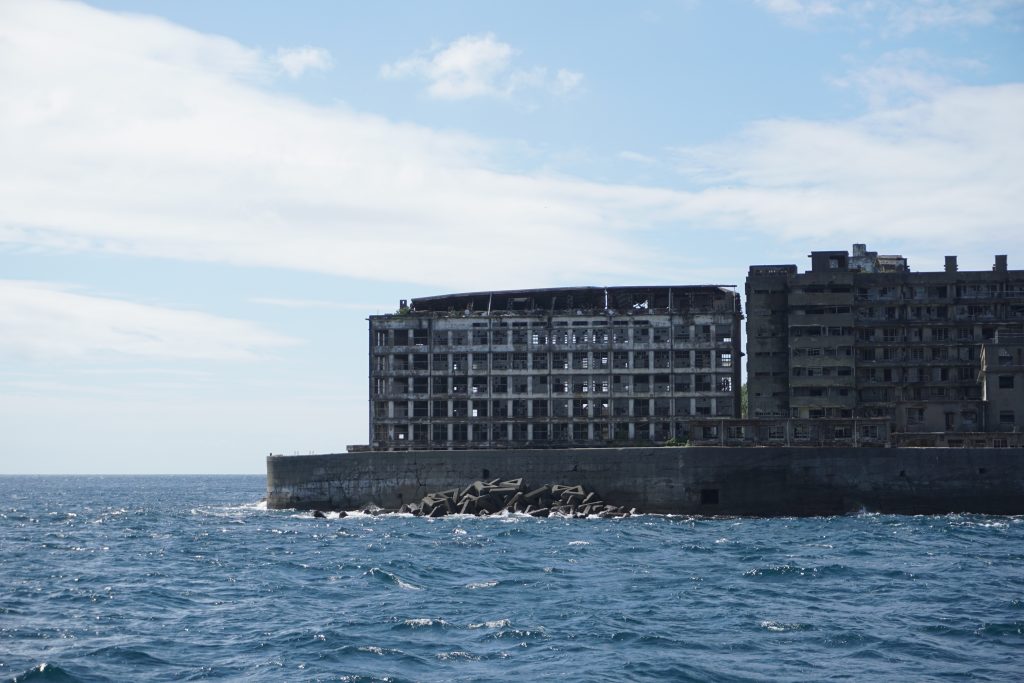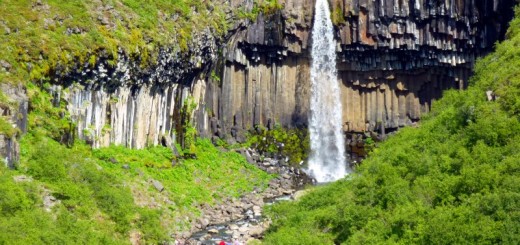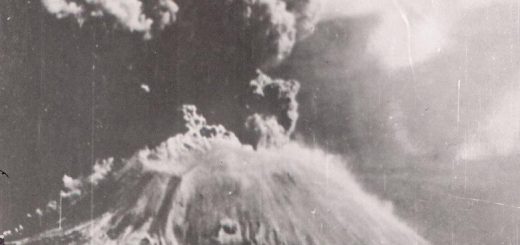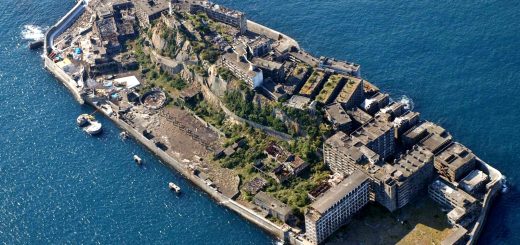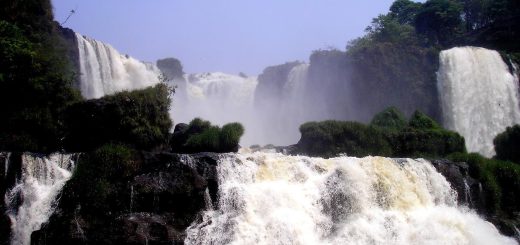Hashima Island: The Ghostly Metropolis of Japan
Nestled about 15 kilometers off the coast of Nagasaki, Japan, lies Hashima Island, known locally as Gunkanjima or Battleship Island due to its resemblance to a Japanese battleship when viewed from a distance. This tiny abandoned island has a rich and complex history that reflects Japan’s rapid industrialization, wartime atrocities, and modern struggles for acknowledgment and preservation.
Table of Contents
Industrial Origins and Peak Population of Hashima Island
Hashima Island’s story begins in 1887 when undersea coal mines were established on its shores, marking the start of its significant contribution to Japan’s industrial growth. The island’s coal reserves were exploited to fuel the nation’s expanding industries, and by 1959, it reached its peak population of 5,259 residents. This densely populated island housed towering concrete apartment blocks, schools, hospitals, and recreational facilities, offering a glimpse into the lives of those who worked and lived there during its heyday.
Forced Labor and War Crimes
However, Hashima Island also carries a darker history. During World War II, the island was a site of forced labor, with conscripted Korean civilians and Chinese prisoners of war subjected to harsh conditions and brutal treatment. These laborers were forced to work in dangerous mines under extreme temperatures, and many lost their lives due to accidents, exhaustion, and malnutrition. The island stands as a stark reminder of Japan’s wartime atrocities and the suffering endured by those who were forcibly brought to work there.
Abandonment and Decay
As petroleum gradually replaced coal in Japan during the 1960s, coal mines across the country began shutting down, including those on Hashima Island. In 1974, Mitsubishi officially closed the mines, and the inhabitants left the island, leaving behind the towering concrete structures that once bustled with life. The island, now eerily quiet, stood as a time capsule of its industrial past, slowly succumbing to the passage of time and the elements.
Rediscovery and Preservation Efforts
In the 2000s, Hashima Island reemerged from obscurity as interest in its historic ruins grew. The undisturbed state of the abandoned buildings and the island’s poignant history attracted curious visitors and urban explorers. Some collapsed exterior walls were restored, and in 2009, the island was reopened for tourism, albeit with limited access due to safety concerns surrounding the aged structures. Efforts were also made to have Hashima Island recognized as a UNESCO World Heritage Site, highlighting its significance in Japan’s Meiji Industrial Revolution.
Controversies and UNESCO Approval
The path to UNESCO approval was not without controversy. Japan and South Korea negotiated a compromise, with Japan agreeing to acknowledge the forced labor history in exchange for Hashima Island’s inclusion in the UNESCO World Heritage Site list. However, Japan’s interpretation of the history on the island was met with criticism and accusations of historical revisionism. Despite the controversy, Hashima Island was approved as a World Heritage Site in 2015, part of the Sites of Japan’s Meiji Industrial Revolution series.
Modern Challenges and International Dialogue
The acknowledgment of Hashima Island’s history remains a contentious issue. Japan’s reluctance to fully accept the extent of forced labor on the island has sparked international condemnation and debates over historical accuracy. UNESCO’s involvement and the voices of various nations have highlighted the need for a balanced and accurate portrayal of the island’s past in educational and interpretive efforts.
A Haunting Reminder of the Past
Today, Hashima Island stands as a haunting symbol of Japan’s industrialization, wartime suffering, and the complexities of preserving historical truth. As visitors explore the decaying structures and contemplate the lives of those who lived and labored there, the island prompts reflection on the darker aspects of history and the importance of acknowledging and understanding the past to shape a more just and informed future.
A Tale of Resilience and Reclamation
Hashima Island’s journey continues as it strives to reconcile its past and present. The island’s decayed buildings and silent streets evoke a sense of abandonment, yet they also carry the stories of the people who once called this place home. The resilient spirit of Hashima Island lies in its efforts to find a delicate balance between historical preservation, tourism, and the responsibility of acknowledging its painful past.
Preserving the Past
The efforts to preserve Hashima Island’s history are twofold: the physical preservation of its structures and the preservation of its historical memory. While some of the collapsed exterior walls have been restored to their former glory, much of the island remains in a state of decay, a reminder of the passage of time and the challenges of maintaining aged concrete structures.
Beyond the physical restoration, there’s a concerted effort to ensure that the history of the island, both its industrial contributions and its wartime suffering, is accurately documented and presented. Museums and educational centers have emerged to provide visitors with a comprehensive understanding of Hashima’s complex past. Through photographs, artifacts, and personal accounts, the island’s story is slowly being pieced together, acknowledging the suffering endured by those who were subjected to forced labor.
A Global Conversation
Hashima Island’s history transcends its borders, sparking international conversations about historical accountability and the importance of remembering past atrocities. The negotiations and controversies surrounding its UNESCO approval have shed light on the challenges nations face when addressing painful chapters of their history. The island’s story underscores the significance of acknowledging historical truths and striving for a common understanding of events that shaped the world.
Future Challenges and Possibilities
As Hashima Island moves forward, it faces both challenges and opportunities. The delicate process of preserving the island’s structures while honoring its history requires continued dedication and resources. Moreover, the ongoing dialogue between Japan and other nations regarding the interpretation of the island’s history remains essential for reconciliation and mutual understanding.
Despite these challenges, Hashima Island holds the potential to be a symbol of hope and reconciliation. It can serve as a place where people from different backgrounds come together to learn, reflect, and engage in open conversations about history, memory, and the shared responsibility of preventing such atrocities from happening again.
Conclusion
Hashima Island’s story is one of contrasts: a once-thriving industrial hub turned silent ghost town, a place of forced labor and suffering juxtaposed with efforts to preserve its history and promote understanding. Its journey reflects the broader human struggle to come to terms with a complicated past while looking toward a more enlightened future. As visitors step onto the shores of Hashima Island, they are not just exploring a physical space; they are embarking on a journey through time, memory, and the complexities of humanity’s collective history.



